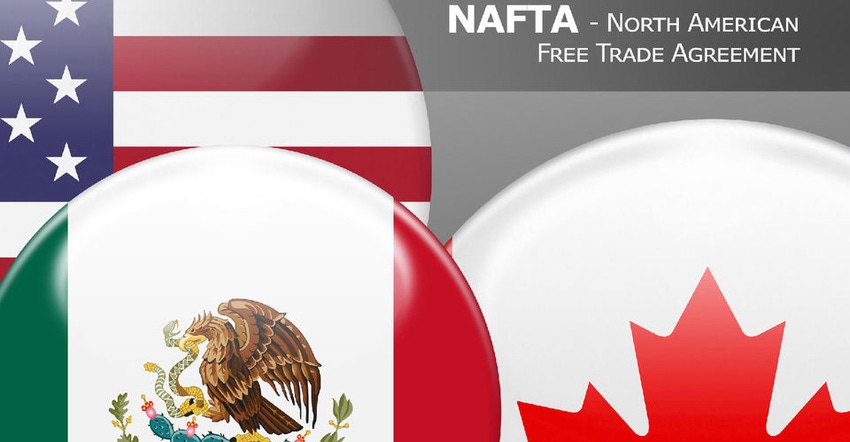Canada currently ships most of its product south to its North American Free Trade Agreement partners. The United States is Canada’s strongest market with 408,000 tons of pork worth $1.4 billion. Mexico is the fourth largest market where it ships 314 tons valued at $587 million.
May 15, 2017

Source: Canadian Pork Council
Canadian Pork Council representatives stressed the importance of trade within North America and beyond during a recent meeting with the House of Commons Standing Committee on International Trade.
Hans Kristensen, a New Brunswick hog producer and the Maritime representative of the CPC’s Board of Directors, spoke on behalf of the council, outlining the importance of trade in North America, particularly between Canada, the United States and Mexico for Canadian hog producers.
“With well over 70% of our industry’s output now exported to almost 100 countries, the Canadian pork sector is a classic example of what can occur with improved terms of trade,” Kristensen says. “In the roughly 25 years since implementation of the Canada-United States Trade Agreement, followed by NAFTA, completion of the Uruguay Round of multilateral trade negotiations and the ratification of several bilateral and regional trade agreements, our industry’s exports have grown from just over $700 million to $4 billion.
“Over the past 16 years we have increased the amount of exported pork and pork products by 387%,” he continues. “In 2016, we broke previous records in both volume and value when we exported 1.246 million tons of fresh and frozen pork valued at $3.8 billion.”
Canada currently ships most of its product south to its North American Free Trade Agreement partners. The United States is Canada’s strongest market with 408,000 tons of pork worth $1.4 billion. Mexico is the fourth largest market where it ships 314 tons valued at $587 million.
The North American meat and livestock industries benefit from trade under NAFTA. Mexico and Canada are the No. 2 and No. 4 export markets, respectively, for U.S. pork.
There are challenges, however.
“Although we speak frequently of an integrated North American market, the unfortunate reality is that Canadian meat entering the U.S. is subject to substantially greater bureaucratic requirements and costs than is U.S. meat coming into Canada,” Kristensen says, pointing to Canadian meat entering the United States needing to go to privately owned inspection houses while U.S. meat entering Canada goes to a federally registered establishment as an example. “This U.S. requirement continues to interrupt trade without adding to food safety.
“There is an opportunity to smooth the flow of pork between the Canada and U.S. by reducing regulatory barriers and we support the work of the Canadian government in its work toward this end,” he concludes.
You May Also Like



